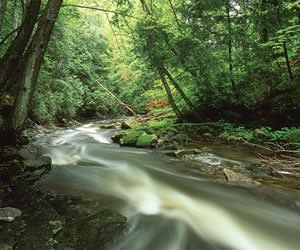Greenbelt Grows Across Ontario With Possible Expansions
Ontario’s Greenbelt could expand with increasing municipal interest
By Nikki Gill, Staff Writer
As the commercial states, “good things grow in Ontario” and Ontario’s Greenbelt Alliance is putting forth initiatives to make sure it stays that way.
In the modern-day “go green” movement, the environment and sustainability have become hot topics in politics. Ontario’s Greenbelt Alliance was formed as a project of Environmental Defence, a Canadian environmental action organization that pledges to challenge governments, businesses and people to ensure a greener and healthier life for Canadians.
Ontario’s Greenbelt celebrated its eighth birthday this year, and with it came the announcement that under a new designation of urban river valleys, the greenbelt could expand to include five million more Ontarians. Currently, the Greenbelt spans 1.8 million acres in Ontario, including the most recent expansion to include Oakville in the greenbelt in 2012.
“The new urban river valley designation applies to publicly owned lands along waterways in urban areas across Ontario,” said Erin Shapero, Land and Water Program Manager for Environmental Defence. [pullquote]The new urban river valley designation applies to publicly owned lands along waterways in urban areas across Ontario[/pullquote]
This is an update to the original Greenbelt Act which focused on protecting countryside, agricultural lands and natural heritage, but did not focus on linkages to urban areas. The update stems from increasing municipal interest for inclusion in the greenbelt.
Under this designation, areas such as the Credit River in Mississauga and Brampton, and the Don and Humber Rivers in Toronto could be included in the greenbelt’s next expansion.
“Municipalities must request the expansion, and make the request to the province under the Growing the Greenbelt provincial criteria that now includes an urban river valley expansion provision,” said Shapero. “Residents can play an important role in requesting their respective municipality move forward with urban river valley Greenbelt expansions on publicly owned lands.”
At its current size, Ontario’s greenbelt is already the largest permanently protected greenbelt in the world, and is also recognized as one of the world’s most progressive land use policies. Other provinces have also started similar initiatives.
“British Columbia has the Agricultural Land Commission and I believe there has been interest in Alberta as well [now] facing sprawl and suburban development advancing the urban line outwardly,” said Shapero.
As Environmental Defence continues its success in pushing this initiative forward, other provinces are likely to use the same progressive policies to protect green space and agriculture across the country, as they can now see the environmental benefits sustained through the greenbelt.
“It is a world renowned policy framework that has safeguarded thousands of acres of farmland, in a world where agricultural land is disappearing and being paved over at an alarming rate,” said Shapero.
As for Ontario, a recent report by Environmental Defence, titled “Good Things are Growing in Ontario: Expanding Ontario’s Greenbelt through Urban River Valleys,” recommends that the municipalities of Toronto, Mississauga, Brampton, Oakville, Markham, Guelph and Hamilton use the urban river valley designation as a method to educate their residents about the greenbelt. Once residents understand the program, the municipality can push for inclusion in the next greenbelt expansion.
At this rate, the greenbelt could very well be celebrating its ninth birthday with five million more Ontarians.
Nikki got her first taste of journalism as a teenager working for The Mississauga News. Since then, she’s graduated from the Ryerson School of Journalism and also travelled to the United Kingdom to intern for the London Daily Express.































Share the post "Greenbelt Grows Across Ontario With Possible Expansions"